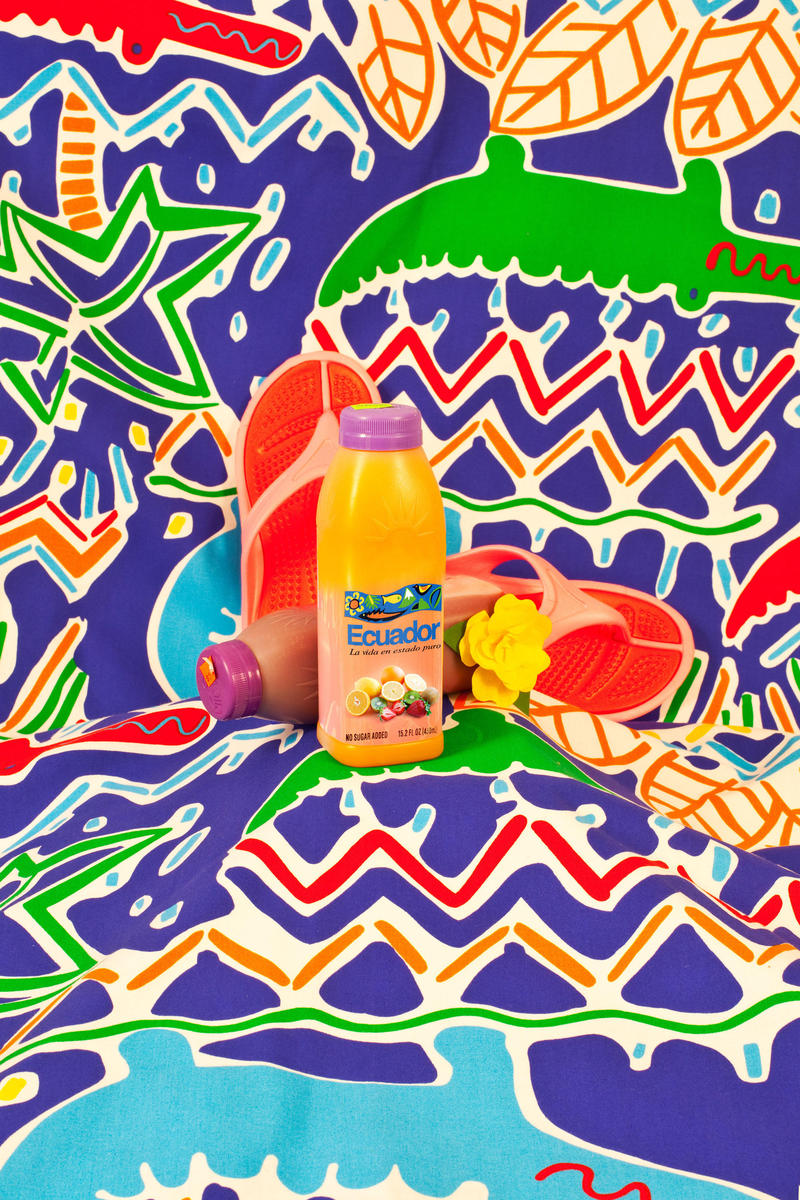
What are the roles and tasks involved in nation branding?
1) Crafting nation’s Identity and Competitive Strategy and Vision.
2) Supporting the creation of the reality that leverages the Strategy.
— “What is nation branding?” Mathias Akotia, Chief Executive Officer, Brand Ghana
The term “nation branding” was coined seven years after the fall of the Berlin wall, four years after the publication of The End of History, and three years after the release of Jurassic Park. Today the practice is ubiquitous — countries hire marketing firms (or a minister’s cousin) to design logos and websites, perhaps a video destined for YouTube. The idea that nations need to brand themselves is now taken for granted: a country needs a logo, as it needs an army, an anthem, and a flag.
When Oman decided to “rebrand” itself in 2008, the sultanate established a special agency under the command of Sayyid Faisal Al Said, Minister of Heritage and Culture. One result? BrandOman.om, the official website of the Omani national brand (not to be confused with BrandoMan.com, the personal website of a teenager from Lubbock, Texas). “The only sort of government that can afford to ignore the impact of its national reputation,” Al Said said in an interview at the time, “is one which has no interest in participating in the global community, and no desire for its economy, its culture, or its citizens to benefit from the rich influences and opportunities that the rest of the world offers them.”
Oddly enough, Al Said’s claim had appeared word for word on the very same website, months earlier, in a talk by Simon Anholt — an author, researcher, and “independent policy advisor,” who happened to be the inventor of “nation branding” itself. In Anholt’s telling, the idea wasn’t exactly revolutionary. He was just a keen observer of international trends, and in the heyday of paradigmatic multinational brands like Nike, Sony, and IBM, it was easy to transpose the idea of global branding to the identities of nations themselves. Despite the simplicity of the idea — or, more probably, because of it — the reaction was overwhelming.
That is the story, according to Simon Anholt. It turns out to be quite difficult to find anything about nation branding that hasn’t been written by, published by, or in some way linked to Anholt. But if he’s the alpha, he’s also the omega: in addition to being the definite authority on the genesis, practice, and reception of nation branding, he is also its most outspoken critic. In April, the Economic Times of India published a short article by Anholt under the title, “Why ‘Nation Branding’ Doesn’t Exist.” (In May, his Nation Branding Masterclass proceeded as scheduled in São Paulo, Brazil.)
While Anholt bruits his independence — he prefers to work directly with governments, he says, to make sure they don’t fall prey to “marketing firms that often charge exorbitant fees without any real concern for the country’s best interests” — he has partnered with the global market research firm GfK to produce the Anholt-GfK Roper Nation Brands Index, “the only analytical ranking of the world’s nation brands.” The NBI is intended to serve as the universal measure of national brand perception, a kind of Dow Jones of nation-states. Published annually from tens of thousands of interviews conducted internationally, on indicators ranging from people and governance to investment and heritage, fifty nations are ranked from best to worst (with Middle Eastern countries generally occupying the bottom ten).
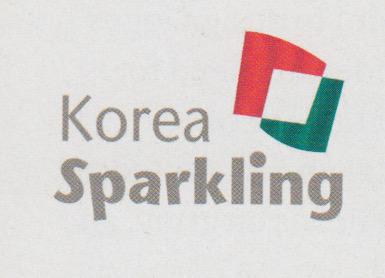
The NBI is not uncontroversial. Low-ranking South Korea recently decided to ditch their Anholt advised “Korea, Sparkling” campaign, temporarily reverting to the less incomprehensible “Dynamic Korea” brand. (The chairman of the Presidential Council on Nation Branding complained that it made people think of “sparkling mineral water.” Some other brands under consideration include “Miraculous Korea” and “Advanced Technology & Design Korea.”) But they have also enlisted the foundation wing of the Korean electronics megacorp Samsung to create a new national-brand index. The nation-brand aggregator Nation-Branding.info, which had tracked the developing “Korea Sparkling” campaign with enthusiasm, fumed that “the fact that Korea will tailor its own nation-brands index will render the program’s evaluation completely partial and misleading, and additionally it will make comparisons with other nation brands totally pointless.” For its part, South Korea, which has committed seventy-four million dollars to its branding initiative, doesn’t trust Anholt’s brand index.
So is Simon Anholt a fraud? Aren’t Anholt the market-researcher, Anholt the diplomat, Anholt the independent scholar, and Anholt the nation-index working at cross-purposes?
Not necessarily. There’s no law against an information feedback-loop — in fact, like other kinds of intangible value (and money itself), brand value is as a rule deeply reflexive. In the words of Guy Debord, “It is good because it exists, it exists because it is good.” Anholt suggests, too, that if the brand exists, the nation might strive to become it.
Even Anholt the thinker — the shy one at the orgy, whose last book, Brand New Justice (2005), claims to be “fighting globalization with its own weapons,” who claimed recently that “I don’t really know what branding is” — even this Anholt cannot really be called a fraud. Because there’s no law, either, against intellectual conflicts of interest between theory and practice in a discipline. Such conflicts are the rule rather than the exception. Architects critique architecture, art professionals critique art, political scientists critique the government — everyone has a stake in his or her respective field. It’s nothing new, the way critique is instrumentalized to become a value-adding factor to a service or commodity — Anholt is in good company. But the discourse he initiated, and the strangely anemic, multicolored fruit it bears, are very much ripe for satire.
Bidoun invited international relations experts, artists, architects, and 63 members of our editorial and design team to evaluate a selection of exemplary nation brands.
Contributors:
Sophia Al-Maria
Shumon Basar
Nelson Harst
Parag Khanna
Tiffany Malakooti
Andy Pressman
Babak Radboy
Michael C. Vazquez

Nelson Harst: There is something reassuringly early 1990s about this one.
Babak Radboy: Wait… this is just a combination of Odwalla and Naked Juice?!
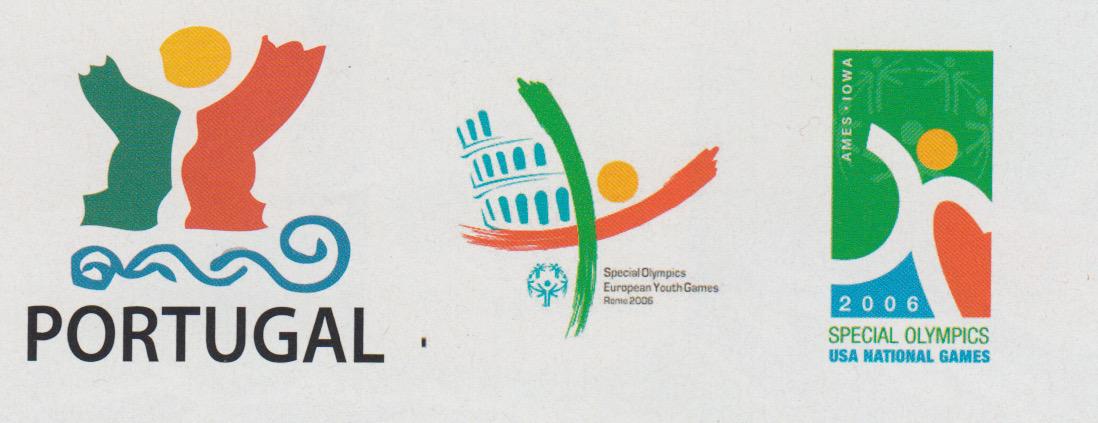
NH: Don’t shoot! I surrender!
BR: It’s like a Special Olympics logo. He’s even crossing a finish line!
Sophia Al-Maria: A hunchback is trying to get attention from Spain’s shadow.
Michael C. Vazquez: I think it might be the missing link.

Shumon Basar: This belongs to the Ur-Logo category, no doubt classified in a missing manuscript by Jung as one of civilization’s most enduring archetypes. It morphs into a logo for the Olympics one year, then a World Cup, maybe a FIFA Cup.
Andy Pressman: This one has everything: brush strokes, a flower, many colors, and no meaning.
NH: Were Latvia, Armenia, and Poland all just sold the same kit or did they jostle around to end up with the same crap magic marker pallet?
BR: All of the countries with the most horrific histories end up with this toddlerific fingerpainting look… is it that they employ designers too young to remember?
MCV: I think it was actually drawn by a child. Look at that M!
NH: This is probably already obvious to everyone else, but I just realized all these new logos are for website banners. Armenia took their cue from Google. Imagine google.com with this over the search box instead.
BR: Armenia: I’m Feeling Lucky
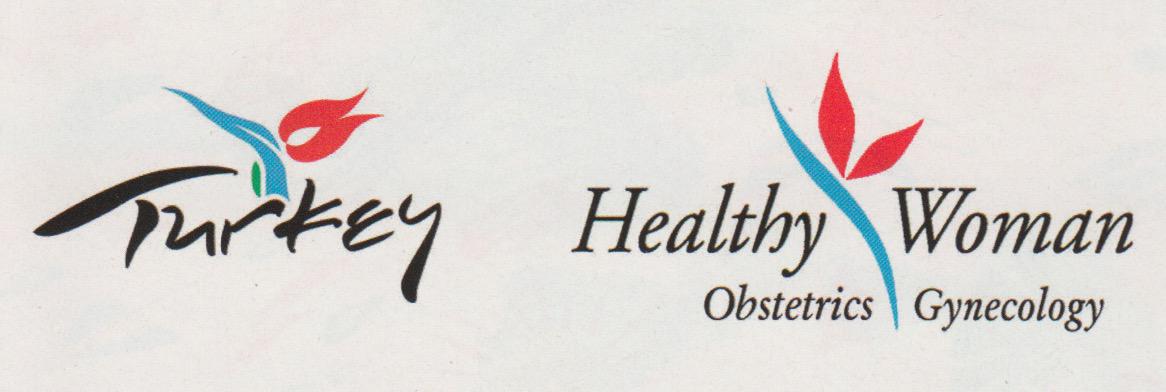
MCV: Man, Turkey desperately wishes it had a vowel with a diacritical mark in it.
BR: Yeah, what it that thing doing to the R? Is it rrrrrrrrolling?
SB: Is that a flame? Or a tulip? Or a swimmer with a flaming head? Or, a tulip? If you have to spend too long figuring out what something is, it’s already failed its job.
BR: It’s totally a Bird of Paradise, which is indigenous to… South Africa?
Parag Khanna: They should go with the whole exotic, spicy, soukeffect somehow. Or use the old “bridge between Europe and Asia” cliché.
BR: They should have just gone for it and put a turkey in the logo… . What is the first thing you think of when you hear Turkey?
SAM: The other white meat?
AP: It’s dark, if you’re doing it right.
BR: But isn’t it interesting that Turkey has both dark and white meat? Europe and Asia?
MCV: Is turkey the pork of Islam?
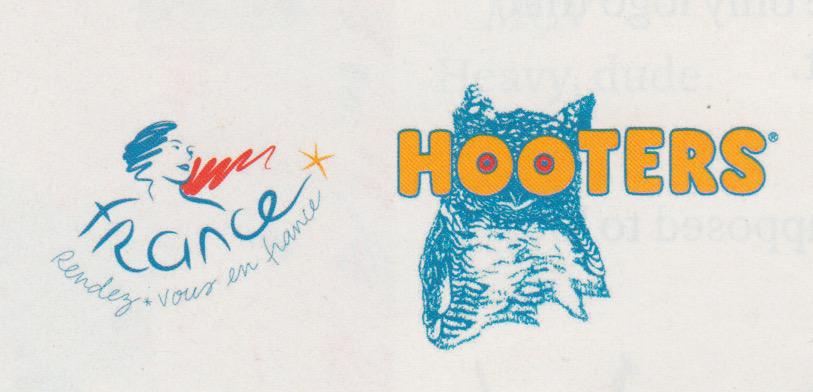
SB: Never in my wildest, adolescent dreams did I imagine that the letters “R” and “A” could become the ample, pert bosom of a lady who also I presume embodies the noble virtues of the Republique. It says, “We are fine with topless bathing. Look at that famous painting by Delacroix, Liberty Leading the People. She’s got her ‘seins’ out in the middle of battle. We are that liberal!”
PK: Sophisticated yet boring… “Old Europe”!!
But still perky…
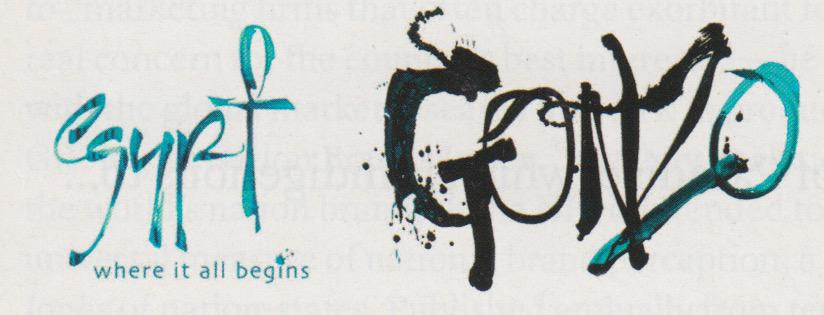
NH: Rave flyers and clove cigarettes.
PK: Any watery-blue squiggly pattern now reminds me of the Avatar characters. Too removed from reality to connect to Egypt at all.
NH: There was some sub-brand of cloves that had this very logo circa 1995. Anyone else remember this?
AP: It’s almost as if “Egypt” has been the theme of so many restaurants, hotels, movies, and casinos that the country has mistaken itself for its motif.
MCV: This might be the only logo that had a CGI budget.
AP: What is it even supposed to look like?
BR: Ralph Steadman on ecstasy?
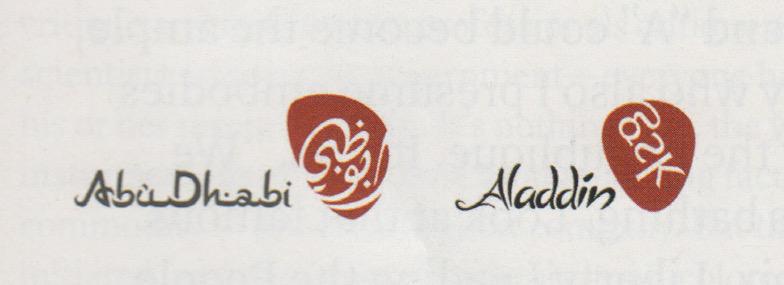
PK: The Abu Dhabi icon looks like a guitar pick.
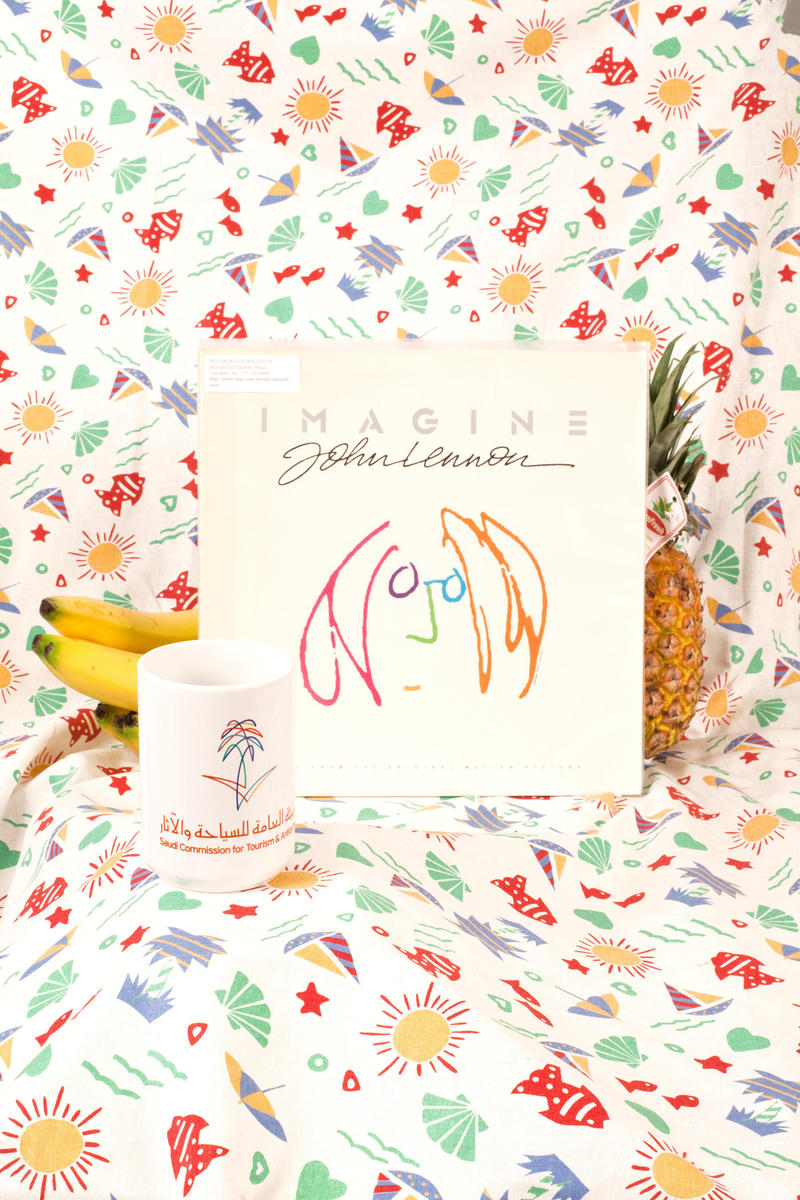
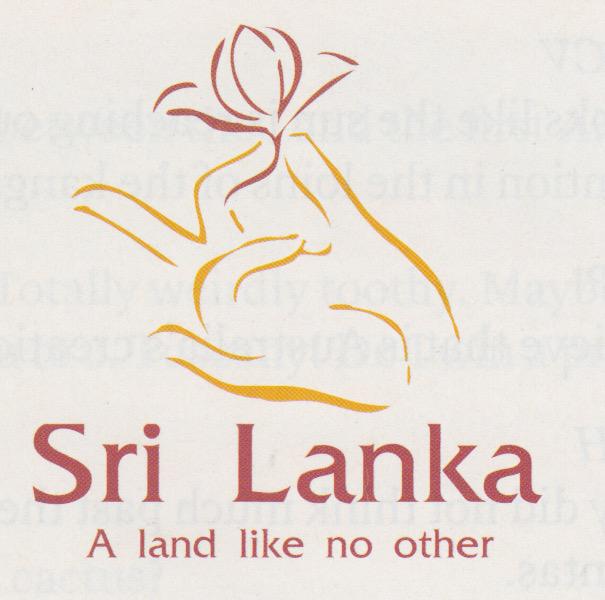
Tiffany Malakooti: Pardon me but… isn’t that the shocker?
BR: What’s the shocker?
AP: Don’t ask.
BR: Some of the more hilarious campaigns occur when countries seek branding not because they are unknown but because they are well known for terrible things. Here in Bizarro World, Sri Lanka is best represented by five infinitely graceful fingers delicately presenting us a babylotus blossom. Close your eyes and pretend it’s opposite-day!
MCV: Heavy, dude.

SB: How many countries are identified by an indigenous (rather that symbolic) animal? Is this Skippy? Skippy’s great-grandchild? And how did those kids learn to speak kangaroo? Is it taught at school in Australia? Random fact: Flipper the Dolphin was a sex-addict. It looks like the sun is reaching out to stoke the fires of invention in the loins of the kangaroo mother.
AP: I believe that is Australia’s creation myth.
NH: They did not think much past the national airline, Quantas.

SB: Astounding absence of a) the Burj al Arab b) the Burj Khalifah c) anything the world has come to love – or hate – about the idea of Dubai. So many opportunities squandered, surely? Not even some Khaleeji cliché: camel, falcon, dhow – Oh, Qatar got there first. Damn you Qatar. Damn your higher GDP per capita and currency reserves.
BR: It doesn’t look like a place, it looks like a messenger service. Anything having to do with transit. Dubai is on the move. Dubai is an SUV, an airline, a luxury liner…
MCV: Does a condom have to do with transit?
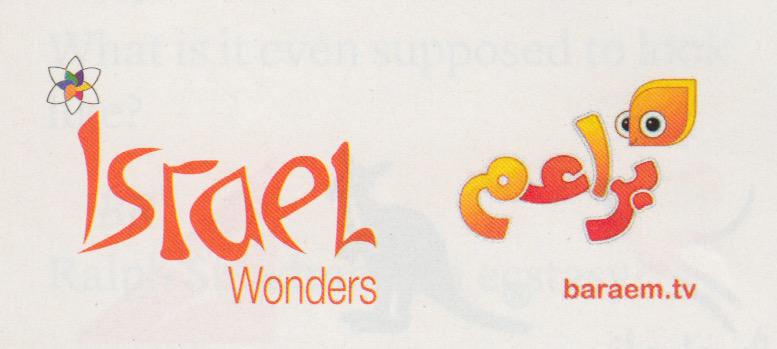
BR: Ah, the wondering Jews.
SB: Israel Wonders while America Freaks Out, Iran Prods, North Korea Stews, Russia Laments, China Outlaws, Great Britain Dwindles, and India Supersizes
BR: “According to a late-2006 National Brand Index survey of nearly 30,000 respondents in 35 nations conducted by branding expert Simon Anholt, Israel had the lowest public perception of any country in the world — except for Iran.”
SB: Good to hear that Iran and Israel are battling it out at EVERY level, military and symbolic. No prizes for second to last…
MCV: Weirdly, I can’t find any information about Israel’s ranking in Anholt’s Nation Brand Index after 2006. Did they just ask to be removed from the list or something?
BR: Wait — is that ‘I’ dotted with an atom?!
NH: Israel: Do you really wonder if we have the bomb?
BR: This looks exactly like the logo of an Arabic children’s network. Oh snap!
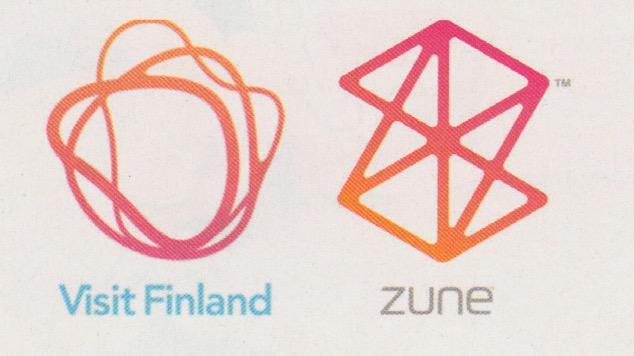
SB: Visit Finland and… squiggles? This is a sweeping statement, here goes anyway. I’ve often found the Finns to be the hardest people to read facially. Deadpan and droll do not suffice to describe the incredible imperviousness of what they might be thinking and how that manifests on the outside. I’ve adored this in the few Finns I’ve met. This logo basically does the same thing. I have NO IDEA what it’s thinking. I guess I just have to visit Finland to Fin-d out.
NH: It looks like the logo of a failed social networking site.
MCV: It’s a screensaver. I think this means that Finland’s computer is asleep.
PK: The rings are meant to symbolize the Northern Lights!! But I guess it didn’t work if no one else picked up on that…
BR: Wait, are the aurora borealis God’s screensaver?
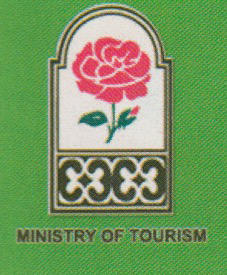
NH: Morocco, Yemen, Kuwait, Liechtenstein and Syria here all have a very conservative, even archaic approach. Am willing to bet they were made in-house (or lifted from an archive) rather than drawn up by an agency.
They are more of a “stamp” than a logo. The other logos can float on any white or neutral background. These are solid, bordered objects to be affixed to letters, postcards, passports, luggage. They are props rather than suggestions. Most of these non-logos also reference the state and state power. Ministry of Tourism (Syria, Yemen). The crown (Liechtenstein). The feudal coat of arms of Kuwait. All are filtered through a sort of early deco-inspired modernism circa 1930.
The dated feel of these “stamp” images reveals the airy inspiration for the newer logos. Travel without borders, without negotiation. A childish simplicity. Sublimation of solid nationalism into a clear vapor of suggestion. Vacation — vacate — vacuum.
MCV: It doesn’t even have its name on it!
SB: I get a sense of how well (or not) the buses run and how fast (or not) you can download the new Owen Wilson movie from this “stamp” logo.
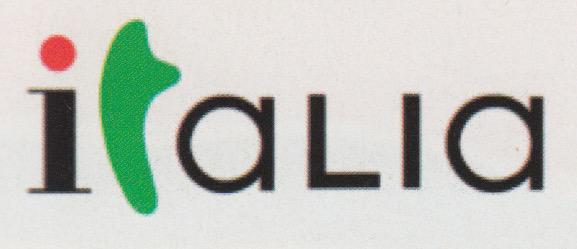
SAM: Is that Mr. Bill there between the I and the first A?
SB: It’s all toothy to me. Totally weirdly toothy. Maybe tusky. Which gets you to… Tuscany! Do I win a prize or what?
MCV: What is that thing? A cactus?
BR: It’s the nose of the sphinx.
PK: A real wasted opportunity for Italy. No hints of its “bella”-ness, design culture, cuisine, history, etc. — just this shapeless blob. Berlusconi should have spent more out of his own pocket to come up with something better.
MCV: I think it’s a scimitar. Remember the Arab conquest of Sicily!
BR: No I don’t.
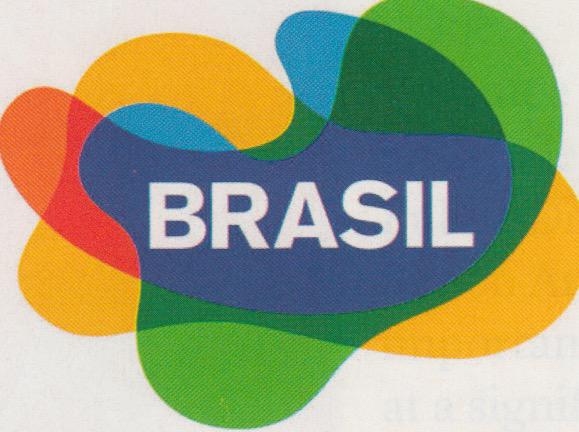
PK: Colorful and blobby, implying both rainforest and ocean — and Carnival party-time. Brazil can basically do anything it wants with the logo and people will go there.
BR: I thought this was a dead-ringer for the Valvoline logo, but it looks nothing like it.
MCV: I’m telling you, that thing in the Italy logo is a scimitar… AND NOW IT’S COMING FOR BRAZIL!
BR: I told you, it’s a nose.
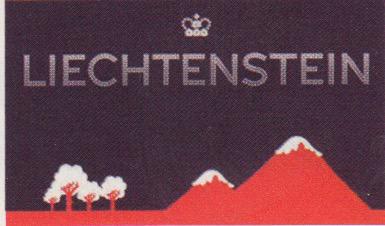
NH: Doesn’t this make it seem like a made up country?
SB: I think if you do the research you will find out that Liechtenstein IS a made up country.
MCV: If it’s a made-up country maybe they should make the name easier to spell.
PK: This looks like a bland Christmas card.
MCV: Wait, this is totally a screenshot from a side-scrolling video game.
AP: Leichtenquest!
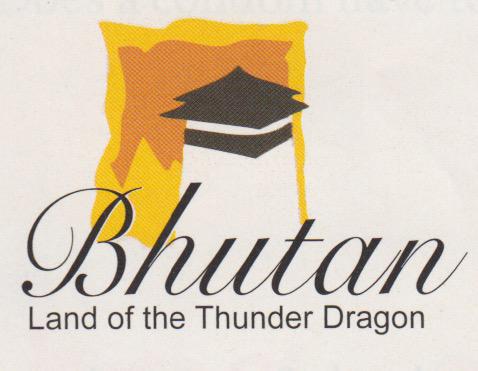
SB: Is the Thunder Dragon a singular entity, like Skippy the Kangaroo? Or is he symbolic, like so many eagles and falcons that bespread many a nations’ flag? This makes me want to go to Bhutan and have my picture taken while petting the nice Thunder Dragon. I hear it likes Cheetos.
BR: Not Cheetos. Cheezits.
PK: The Thunder Dragon only entices kids who would stumble upon it looking for the next Disney movie. Bhutan should have leveraged their pioneering “Happiness Index” in some way.
BR: This is an extremely successful rebranding. Before, when I thought of Bhutan, I imagined a beautiful Buddhist Shangri-La. I thought of its untouched forests and its national hair cut. I thought of the fees they leverage on foreigners to keep it from turning into a gaudy K-hole like Nepal. Now I think of Cheez crackers.
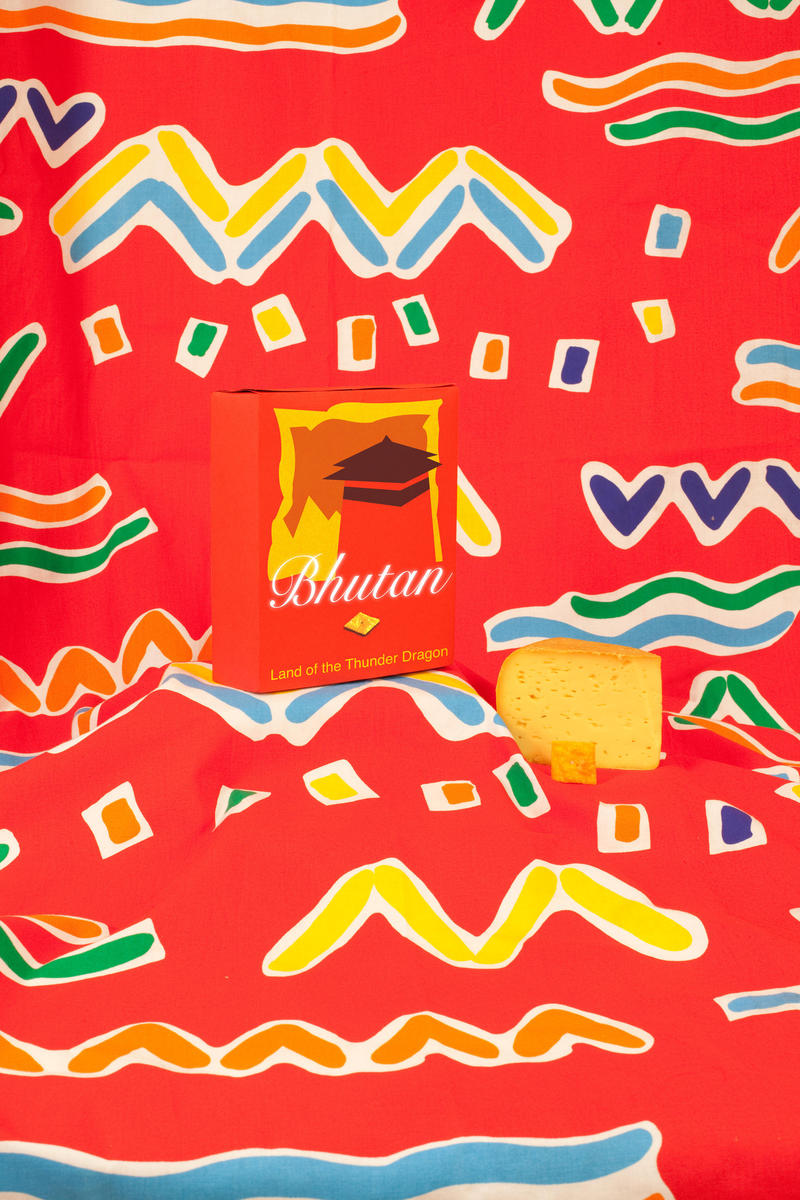
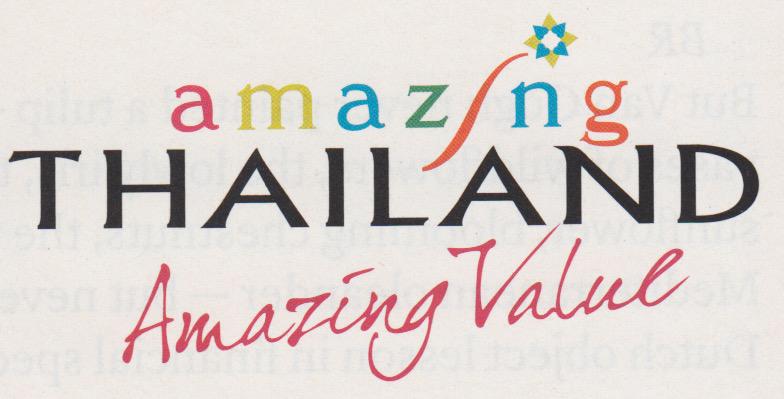
BR: Krittinee Nuttavuthisi wrote in an article in Place Branding and Public Diplomacy (edited by Simon Anholt): ”One of the most important issues placing Thailand at a significant disadvantage is the image of sex tourism.” The whole point of the “Amazing Thailand” campaign was to counteract that image. Then the recession hit and they bit the pillow and added “Amazing Value.”
AP: Bit the pillow?
MCV: Don’t ask.
NH: The problem is that the campaign can now be read “Sex Tourism = Amazing Value”!
SB: Thailand: more Bang(kok) for your Buck!
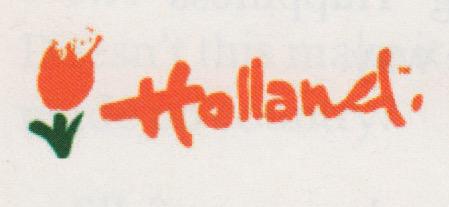
SB: That there tulip looks like an assassination-induced blood-splatter. To paraphrase Godard, “That’s not blood, it’s just orange paint.” Whatever happened to Roxette?
PK: Simple, abstract tulip is kind of nice actually. But why not be honest and paint a marijuana leaf on the other side? You know, just to acknowledge both sides of their floral charms.
BR: But Van Gogh never painted a tulip — he painted vases of wildflowers, the lowly iris, the roadside sunflower, blooming chestnuts, the poisonous Mediterranean oleander — but never the tulip, that Dutch object lesson in financial speculation.
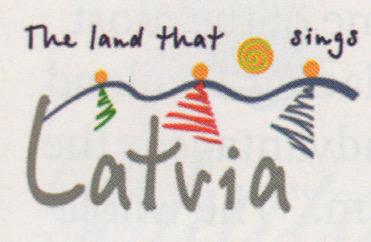
SB: The Land that Sings. Sings what? Pounding Europop? Alt-folk? And what if you want a quiet getaway, some peace, escape? Does the land ever stop singing? Or is it singing from melancholy? Like a sad Neil Diamond? Now I’m sad.
PK: Until Latvia has won the Euro-Vision song competition, they’re not qualified to claim this.
BR: I found this on the blog of a traveling choir-man:
Early on in my time in Latvia, I was told — nay, warned — that Latvia is the land that sings. The caveat proved to be true in every way, and whether or not it was meant to be prophetic, for me the admonition was self-fulfilling. Many songs were about nature, with titles like “Fast, Fast River Flow” and “Behind the Mountain Smoke is Smoking.” … Other songs were written to celebrate the very act of singing. Take “Song to Song” or the frank “Born Singing, Growing Singing.” One of my personal favorites, “Labvakar, Sievas Mate,” or “Good Evening, Mother-in-Law,” defied all categorizing, with its playfully plaintive timbre.
“And it’s all pretty much about sex!” spewed Fils, an Australian-Latvian teddy bear. Atis, always the diplomat, would turn and say, “Don’t even try to understand these, Tim. We’ve heard these songs since we were on our mothers’ teat.” Then, there was the seemingly innocuous tune by the name of “Rigas Torna Gala Zile,” a song about a finch singing atop the Riga Tower. What could be sexual about that? “This line is ‘You sing between roses, I sing between the girls,’” waxed Gregors.
“‘If you don’t sing nice, I’ll get the boy to eat your feather,’” continued Fils.
The closest translation the guys could give me for “Lokatiesi, Mezu Gali” was simply, “Sex.”
… I decided against inquiring further about “Mazs Bij Teva Novadinis,” or “Small is My Father’s Farm.”
From timinlatvia.blogspot.com

MCV: Isn’t that kind of insulting to the Nigerian people?
BR: I thought so too, but check this out. From Nairaland.com:
“Nigeria, good people, great nation,” I had exclaimed and someone quickly reminds me that you cannot market a bad product. Much more painful is the fact that this opinion is constantly echoed every time. How have we fallen so far? I ask ‘what is Nigeria?’ As far as I am concerned, Nigeria is the sum of its individual citizens, and to call Nigeria a bad product is to call each and every Nigerian a bad person. …
We all like to complain about what the government is doing or not doing? But ask yourself too, what am I doing? I do not deny that there are bad people in this country, but tell me one country in this world where they are not. Much more, I believe that there are more good people than bad ones in Nigeria; the problem is simply that we have lost our voices and are sitting on our hands. We chant the slogan of the defeated – ‘if you cannot beat them, join them’. …
Let every one of us (good people) who belong to this blessed and most populous black nation in the world begin to use our minds and think of how to make this land better. Let us lift our voice and drown the chorus of ‘bad product’…
I challenge us to dream again, to tell the world of our dreams of a great nation, but most importantly to act. Douglas Everett said ‘there are some people who live in dream world, and there are some who face reality; and then there are those who turn one into the other.’ As we become the latter, we would hear the world join in this awesome refrain – ‘Nigeria, good people, great nation’.
I still believe in green, white and green… do you?
MCV: Who is Douglas Everett?
BR: I have no idea.